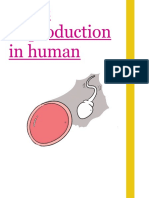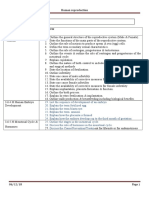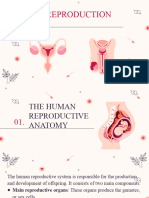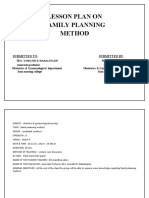Menstruation = breakdown and shedding of uterus lining via vagina; monthly blood loss (day 1 5)
Contraception/techniques to prevent pregnancy (not technically syllabus):
- Hormonal
- Barrier (condom)
- Rhythm method
- Vasectomy
- Cutting of oviducts
How it works Advantages Flaws
Rhythm Track ovulation date: thinner Date of ovulation varies; sperm
cervical mucus + rise in basal body ˚ survives long enough in oviduct?
C; avoid intercourse.
Vasectomy Sperm ducts/vas deferens cut so no Minor surgery; local Expensive to reverse; no STI
sperm in semen; no fertilisation. anaesthesia; testes protection.
outside body so doesn’t
affect other organs.
Oviduct cutting Oviducts tied/cut; sperm can’t go Irreversible; internal surgery —>
up fallopians; ovum can’t move complications? no STI protection.
from ovary to uterus.
Hormonal Progestin (PR) thickens cervical Don’t have to remember Side effects (acne); no STI
mucus; inhibits LH + FSH release so vs condom; highly protection; long time for fertility
no egg maturation/ovulation. effective. to rise to normal (contraceptive
injection).
Barrier Prevents sperm entering STI protection.
Hormones:
Secreted Levels Effects
from
FSH Pituitary - Ovum maturation inside follicle
gland - Stimulates oestrogen.
Oestrogen Ovaries Low 1-5 - Builds up uterus lining; for implantation.
Increasing 6-12 - Stimulates LH (at peak)
Drop 13-24 (before - Inhibits FSH (+ LH post-ovulation)
ovulation)
LH Pituitary High 14 - Ovulation.
gland - Corpus luteum from follicle fragments.
- Stimulates progesterone from corpus.
- Inhibits oestrogen.
Progesterone Corpus High 15-24 - Maintains uterus lining.
luteum / Drop 25-28 if no - Inhibits FSH & LH to prevent another follicle maturing.
placenta fertilisation
Timeline:
- 1 – 5 = menstruation
- FSH = follicle maturation.
- OE increases to build uterus.
- Stimulates LH: peaks as OE
falls.
- Ovulation 14.
- Follicle fragments corpus
luteum.
- Progesterone increases.
- No fertilisation by 24 = luteum
dies; PR drops.
- Yes fertilisation: placenta
continues PR.
�Puberty:
- Secondary and primary sexual characteristics
Male Hormone responsible Female Hormone responsible
Secondary - Adam’s apple Testosterone (LH - Hip widening. Oestrogen
growth. makes testes produce - Breast growth.
- Voice depends. it) - Pubic hair growth.
- Facial/pubic hair.
Primary - Penis growth. Testosterone + FSH = - Uterus growth. Fluctuation of
(sex - Testes growth. sperm production - Vagina growth. oestrogen levels
organs) - Sperm - Ovulation begins. regulate menstrual
production. - Menstruation begins. cycle.
Target cells of testosterone: penis/armpit.
Birth
Give reason why female does not produce as many offspring as no. of eggs she releases [1]
- Not all eggs fertilised.
- Contraception.
- Miscarriages.
- Some eggs not fertile.
Where are umbilical artery + vein found in & what do they do?
- Umbilical cord.
- Umbilical artery: deoxy blood w waste products from foetus placenta.
- Umbilical vein: oxy blood from placenta to foetus.
How does umbilical cord provide foetus with immunity? [2]
- Transports antibodies from maternal blood to foetal blood.
- Antibodies bind to antigens of pathogen to kill it.
Explain how structure of placenta adapted to allow exchange of substances from foetal <—> maternal [4]
- (Chorionic) villi increase SA for diffusion.
- Thin walled = short diffusion distance.
- Good blood supply / dense network capillaries = high concentration gradient maintained.
What is the role of amniotic fluid [2]
- Protects foetus.
- From mechanical shocks by absorbing them.
Describe the role of the placenta in the development of the embryo [4]
- Diffusion of O2 & glucose into foetal blood.
- Used in respiration to release ATP for growth.
- Amino acid diffuse into foetal blood.
- For protein synthesis for cell growth.
- CO2 and urea diffuse from foetal blood to maternal.
Suggest why size & no. of human male gametes differ from no. & size of human female gametes [2]
- Many more sperm & smaller to increase chances of successful fertilisation.
- Egg cells are larger as contain nutrient store in cytoplasm. Provides energy for dividing zygote/embryo until implants in
uterus.
State the function of head of sperm cell [2]
- Contains haploid no. of chromosomes / DNA.
- Acrosome contains enzymes to penetrate egg cell membrane.
Role of the endometrium: blood vessel rich layer to receive fertilised egg for implantation and support placenta development.























































































